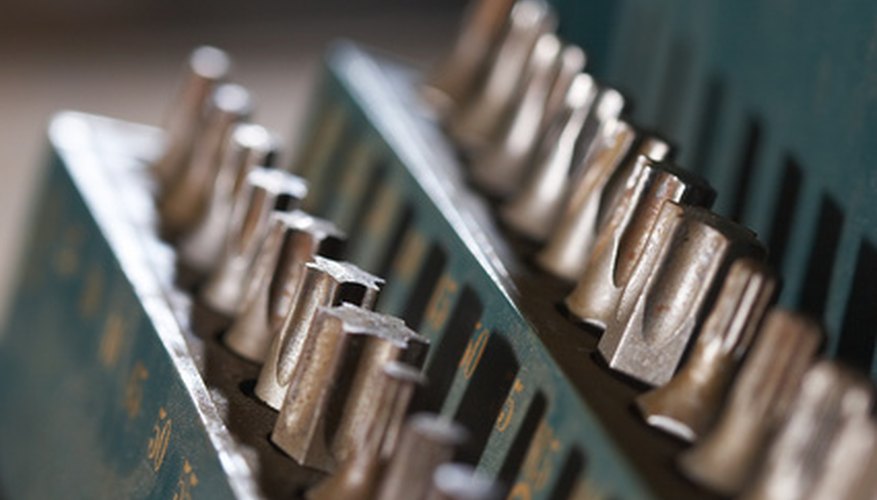Although washing machines are usually reliable appliances, they do require repair as they age. Many homeowners opt to do the repair work themselves rather than go through the expense of contracting with appliance service professionals. Working on a washing machine usually involves the standard hand tools like screwdrivers, socket wrenches and pliers. When diagnosing or troubleshooting your washer, there are some speciality tools you may want to consider purchasing if you plan on doing repairs yourself.
Torx Drivers
Many manufacturers are beginning to use Torx screws as a means of securing outer cabinet panels to the washer frames. Although you can remove these star-shaped screw heads with an appropriate flathead screwdriver, this often leads to stripped heads. Torx drivers have star-shaped ends that fit snugly into these special fasteners.
Ohm Meter

When attempting to troubleshoot electrical components within your washing machine, you will need an ohm meter. An ohm meter measures resistance in between circuits and terminals to determine whether a system is operating correctly. Ohm meters and multimeters come with two probes. The probes measure the resistance and show the value on the scale of the tool.
- When attempting to troubleshoot electrical components within your washing machine, you will need an ohm meter.
- An ohm meter measures resistance in between circuits and terminals to determine whether a system is operating correctly.
Spanner wrench
When working on the transmission of a washing machine you need to remove the tub. The tub connects at the bottom with a locknut. Spanner wrenches fit over these securing nuts with protruding pins. Spanner wrenches look similar to a single propeller with a large hole in the centre.
- When working on the transmission of a washing machine you need to remove the tub.
- The tub connects at the bottom with a locknut.
Agitator Hooks
Removing agitators from a washing machine sometimes is a little more involved than simply pulling it out. Agitators fit over splined shafts and often are very tight. Agitator hooks fit under the bottom of the agitator and use leverage to assist in removing agitators. The agitator hooks resemble meat hooks with rolled handles. You can rent agitator hooks rather than purchase them at some appliance repair centres.
- Removing agitators from a washing machine sometimes is a little more involved than simply pulling it out.
- Agitator hooks fit under the bottom of the agitator and use leverage to assist in removing agitators.
Anti-static Wrist Strap
Newer models of washing machine now have control boards to control many of the functions. When working on these types of boards, you want to ensure that you are grounded to prevent static electricity from damaging the board circuitry. The best way to prevent static electricity is by using anti-static wrist straps. These are stretchy type fabric bands with small electrical wires woven into them. They are used in conjunction with an anti-static mat. Anti-static wristbands have a wire that clips onto the mat to prevent static electricity and also prevent low-voltage shock.
- Newer models of washing machine now have control boards to control many of the functions.
- Anti-static wristbands have a wire that clips onto the mat to prevent static electricity and also prevent low-voltage shock.
